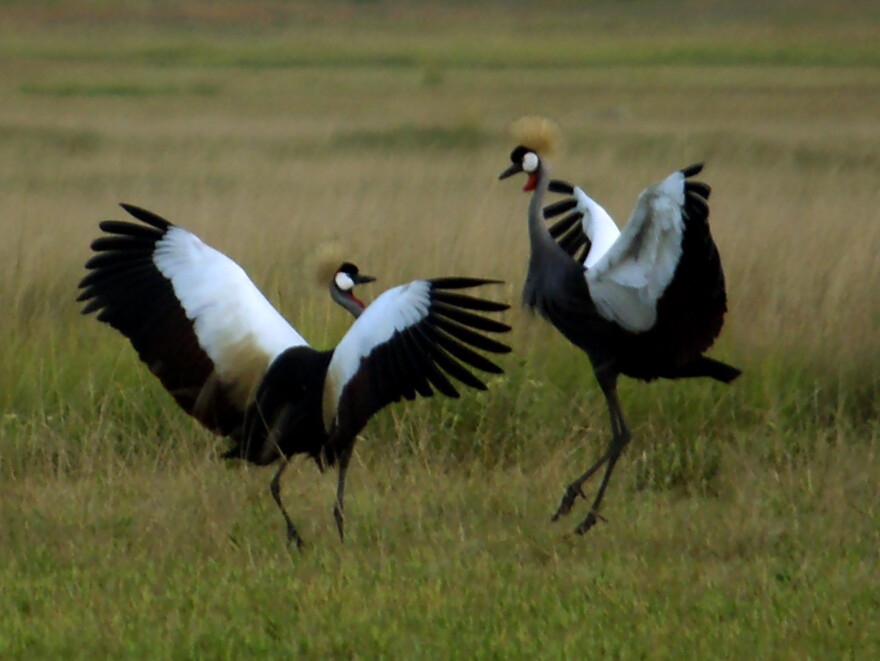Of all the world's birds, perhaps none are more mystical than cranes.
From Asia to North America, these tall birds with haunting cries have been woven into paintings, literature and folk tales. But today, 10 of the world's 15 crane species are threatened, and some are on the brink of extinction.

Their grass and wetland habitats are devastated all over the world. The International Crane Foundation, based in Wisconsin, has been studying and advocating for the birds for 40 years. George Archibald founded it with another young ornithologist on a family farm near Baraboo.
Archibald is still caring for cranes around the world. Speaking via Skype from a field expedition near Ulan Bator, Mongolia, he tells NPR's Jacki Lyden that "cranes are man-sized birds, most of them are 4 to 5 feet tall, they're monogamous, nothing they do is without grace."
Interview Highlights
On the characteristics of cranes
"The common denominator in cranes is that they are long-legged, long-necked birds with very big voices. Their voice can be heard for several miles on a still morning.

"When you see a marsh without cranes, it's very silent. When a crane is in a marsh, and they call, there's this great spirit that lifts up in that area and brings life and meaning to the whole place."
On crane recovery in Africa
"We're very concerned about the beautiful cranes of Africa, particularly the crowned cranes. They're being captured illegally and sent to the estates of the wealthy in the Middle East, and safari parks in China, and to animal dealers in Europe. We've had an 80 percent decline of the birds in East Africa, but we've had some successes, too. We have wonderful people working out there — Maurice Wanjala has established a community group to protect the cranes and the wetlands, and another guy, named Jimmy Muheebwa, in Uganda has actually restored some wetlands, and the cranes have come back."
On the cranes who winter in the Demilitarized Zone between North and South Korea
"[It] has several valleys where about one-third of the world's red-crowned cranes spend the winter, and where about one half of the world's white-naped cranes — that's about 3,000 birds — spend the months of October, November and February and March. It's a wildlife paradise because it's a no-man's land. But unfortunately, there are plans afoot to develop the lowland zones into factories, to provide jobs for North Koreans through South Korean-built factories.
"As long as tensions remain high between North and South Korea, the cranes are fine. But should things soften, the South Koreans have all these development plans on the table."
On the appeal of cranes
"They're simply beautiful creatures, and they live a long time, they live 20 to 30 years in the wild, and in captivity they can live to the ripe old age of 60 or so. They breed very slowly, they lavish care on their young, which is a value embraced by many people — and they're about our size, in many cases, so we can identify with them.
"When you have beautiful things in your environment, you want to paint them, you want to make stories about them, you want to dance like them — cranes are one of the few birds that really know how to dance."
Copyright 2021 NPR. To see more, visit https://www.npr.org. 9(MDEwMTk5OTQ0MDEzNDkxMDYyMDQ2MjdiMw004))





